C. cardenasii / C. eximium
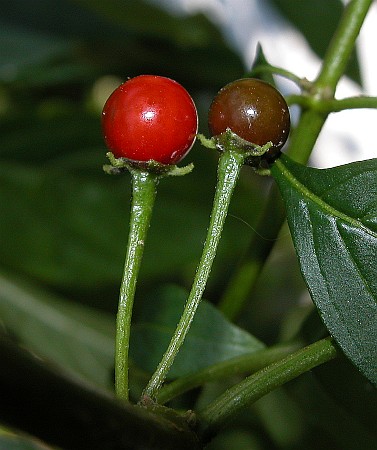
History
Capsicum cardenasii was first found in the highlands of Bolivia near the city of La Paz. In a collection of Otto Buchtien there appeared to be a plant similar to cardenasii witch was found in the year 1911 at an altitude of 2450 meters.
The plant was first described in 1958 by Heiser and PG Smith in the magazine Brittonia; Heiser also found a plant in the outskirts of La Paz

Bolivia, La Paz
Karyotyp investigations showed strong similarities with the C. eximium, C. pubescens, and C.tovarii. Even these morphologically similar species have all, purple flower, brownish seeds, (except pubescens) and small, red, round fruits.
Introduction
Capsicum cardenasii is a plant from the nightshade family of plants and belongs to the same genus as chili and pepper. It comes in the wild Andean area, especially in Peru and Bolivia. The native name is ulupica.
Capsicum eximium was first described in 1950, its distribution area is located in southern Bolivia and northern Argentina.
Vegetative characteristics
Capsicum cardenasii is a plant with woody branches. The branches are very fragile. The plant can grow up 100 cm high and can have a width up to 60 cm. The leaves are narrow, pointed-ovate and hairy or only slightly hairy. They have a length of about 5 cm and a width of 2.5 cm.
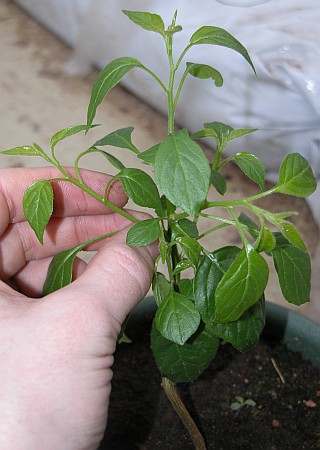
C. cardenasii Young plant
Capsicum eximium can reach a height of 1.6 meters, but also can grow up to 4 m tall trees. The leaves are usually oval-pointed, 2.5 to 5.2 cm long and 1.6 to 3 cm wide. It’s not unusual that the plant have round lance-shaped 4.3 to 8 cm long and 1.6 to 3.3 cm wide leaves
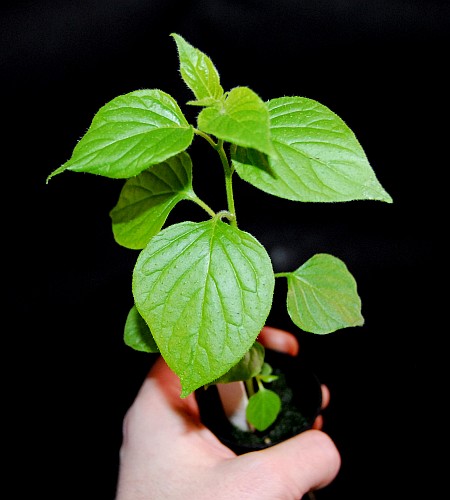
C.eximium Plant
Flowers
C. cardenasii produce 1-2 flowers at the internodes. The approximately 1-cm-long flower stems grow upright and have bell shaped down hanging flowers. The cup is 1 to 1.5 mm long. The flower head is about 7.5 mm long and 6 mm wide. The end of the flower petals are purple coloured.
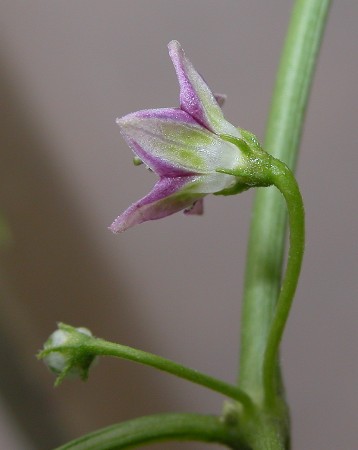
C.cardenasii Flower
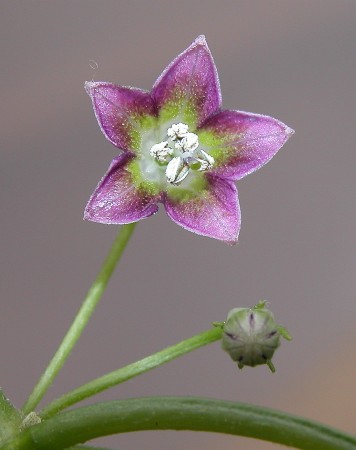
C.cardenasii Flower
C. eximium produce 1-2 flowers, rarely 3 at the internodes with a length from 10 to 15 mm, on very thin stems. The ends of the petals are sometimes slightly bent. The calyx tube is 1.5 to 1.8 mm long.
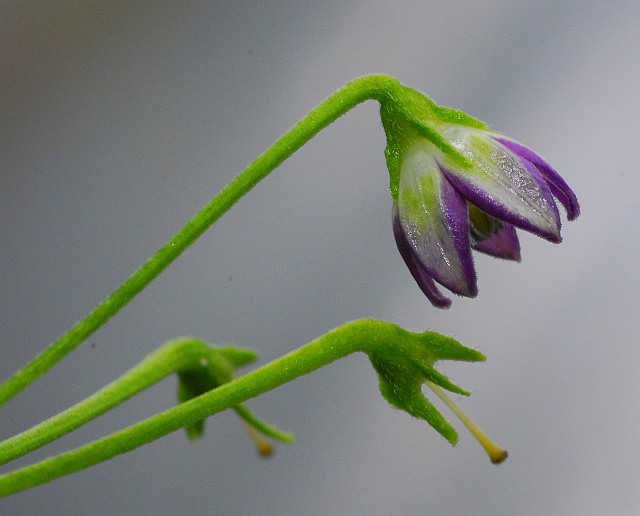
C.eximium Flower
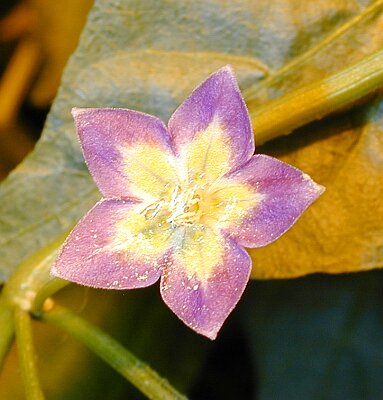
C eximium Flower
Fruits and Seeds
After fertilization c. cardenasii develops 1 cm large, spherical, red berries with thin flesh. The fruits contain just a few seeds (about 12). The sharpness amounts roughly to 30 000 SHU.
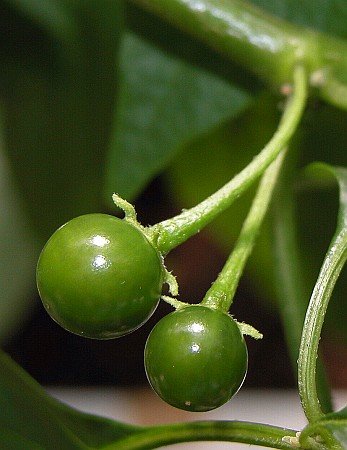
C. cardenasii Immature pods
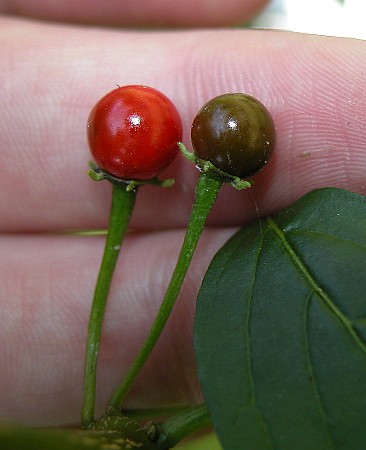
C. cardenasii Pods at different stages of maturity
C. eximium produces red fruits at approximately 15 to 20 mm long stems and have a diameter of 7 to 9 mm. The seeds are brown.
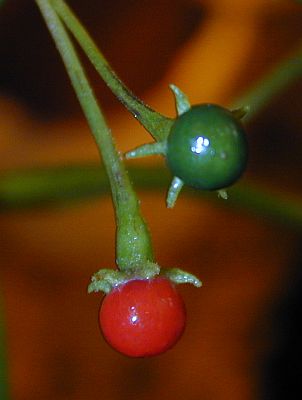
C. eximium Mature and immature pod
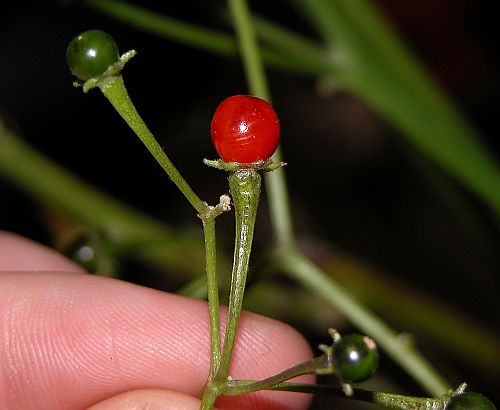
C. eximium Mature pod
Other features
As the only species of the genus Capsicum, C.cardenasii is self-incompatible, the flowers require pollen from another plant to be fertilized. This self-incompatibility is within the C. pubescens complex, consisting of C. pubescens, C. cardenasii and C. eximium, unilaterally passed.
Since C. cardenasii is resistant to tobacco mosaic virus (TMV), there are aspirations, that this property by breeding on other caosicum species to be transferred, though by the self-incompatibility and strong genetic differentiation to cultivated species such as C. annuum.
Characteristics:
- Flower: erect, rotate
- Corona: Purple
- Spots: Yellow/green
- Calyx: long teeth
- Berry: red
- Seed: brown
- Sweetness: no
- Heat: hot
- Leaves: smooth, medium size
- Growing habit: sprawling, bushy
- Plant height: 1-4m
- Number of chromossomes: 24
Sources:
https://www.tropicos.org/
https://www.saunalahti.fi/~thietavu/Chili/L_wild.htm
https://www.wikipedia.org/
Pictures: fatalii.net except where other indicated.
